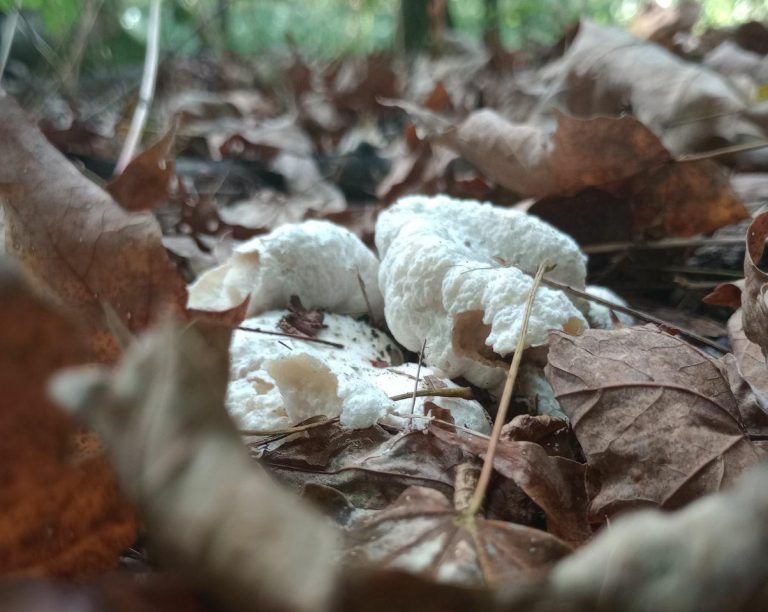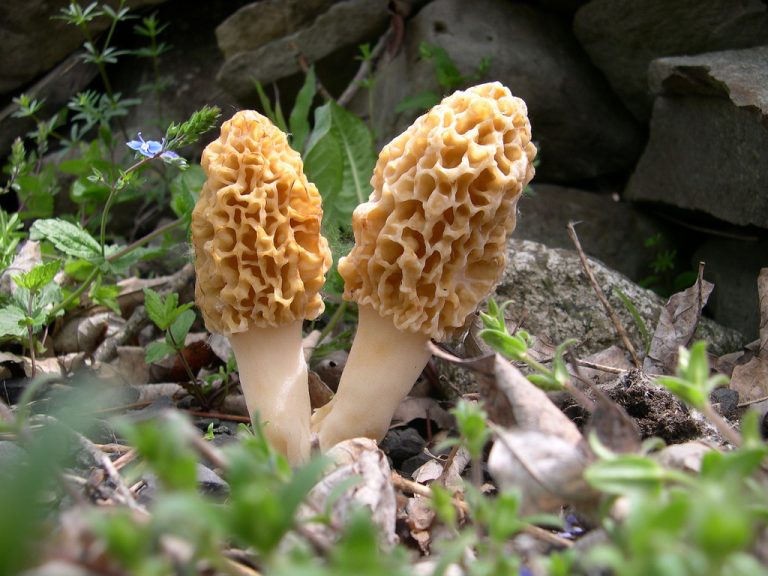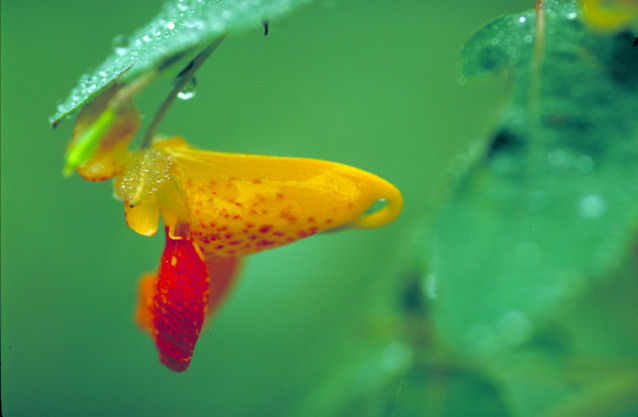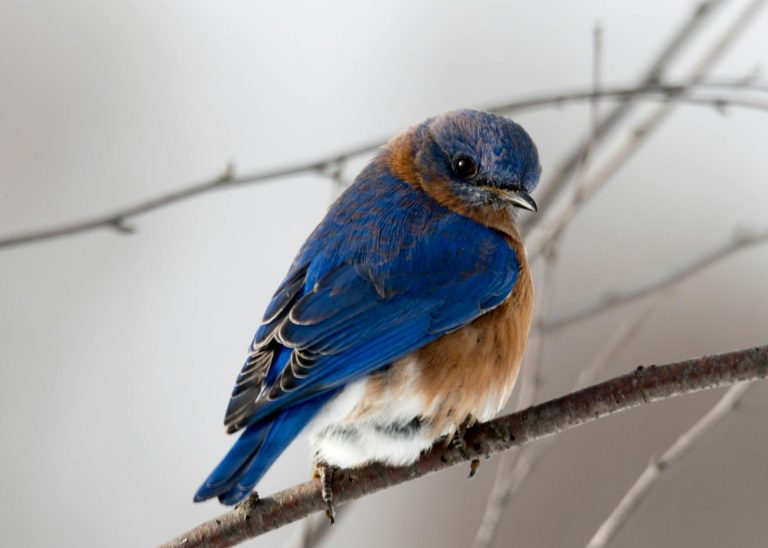Oftentimes, if we are patient and receptive, the perfect solution to our problems comes naturally. This can manifest as a blessing in disguise, a lesson learned from a tough trial, or predators appearing to take care of pests. In the spirit of mushroom month, today we will explore something more from the spore department.
Entoloma abortivum is an odd-looking mushroom with an unusual, and useful, characteristic. Also called shrimp of the woods, or popcorn mushroom, this particular species of Entoloma parasitizes honey fungus — an invasive species that causes root rot in a broad range of woody plants.
Honey fungus
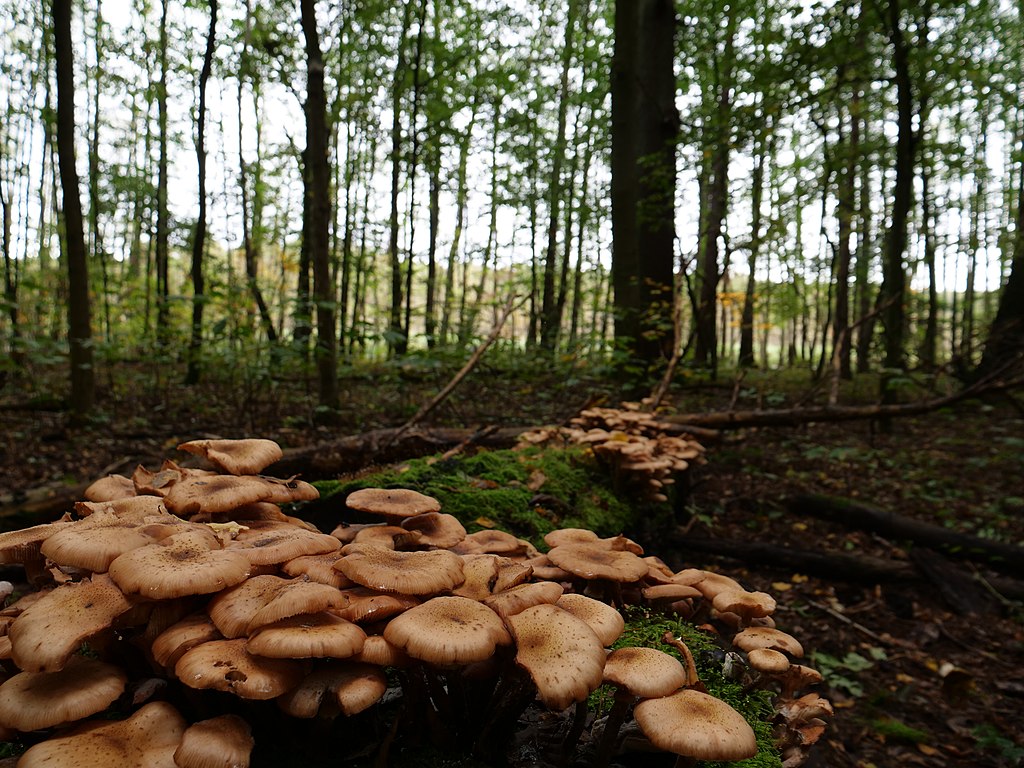
First, let’s take a look at honey fungus (Armillaria). This genus includes many mushroom species which were originally classified as A. Mellea. To this day they are still hard to tell apart and are frequently lumped together under that name. Honey fungus, also known as honey mushroom, grows in abundance around the world, and, due to its dual nature, can be a destructive woodland pathogen.
Armillaria’s feeding fashion is both parasitic and saprophytic, feeding on both living and dead plant material. This means that, unlike most parasites, it can afford to kill its hosts, which include elm, fir, maple, oak, and many fruit trees and ornamental shrubs. It can even affect a number of herbaceous perennials.
Honey mushrooms grow in clusters, often large and numerous, above underground roots that the fungus has infected. Over the course of millennia, the subterranean mycelium can spread to cover an enormous area. Take the Humongous Fungus in Oregon, for example. This ancient specimen of Armillaria ostoyae covers an estimated 2,385 acres of the Malheur National Forest. It is believed to be the world’s largest (and oldest) living organism.
Success
You are now signed up for our newsletter
Success
Check your email to complete sign up
Fortunately, all species of these prolific fungi are edible, although you must be sure to check for a ring around the stems — this differentiates them from deadly galerina, which has no ring.
They are not exactly a choice edible, but their sweet, rich flavor and unique, almost-crunchy texture can be enjoyed in a variety of recipes if cooked properly. It is recommended to parboil the caps for 10 minutes, after which they can be used in soups, sautés and stir fries. They can even be pickled or dried.
Even if you ate them every day, however, consuming honey mushrooms does little to control the growth of this invasive fungus. This is where nature comes to the rescue.
Shrimp of the woods
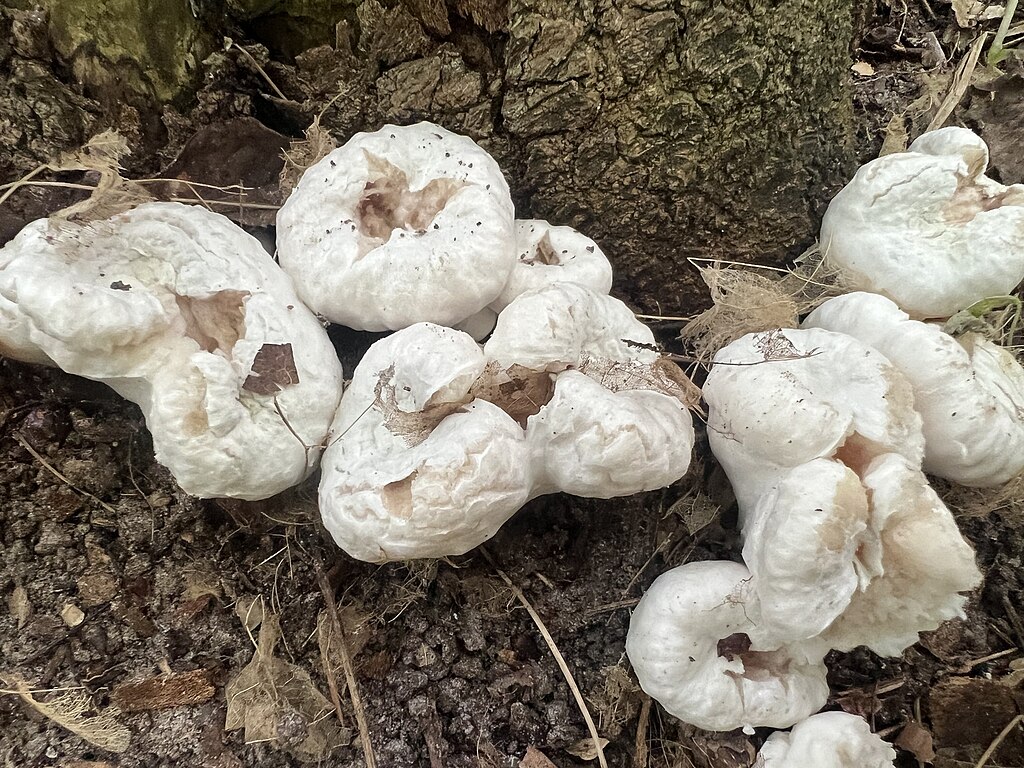
Entoloma abortivum (abortive entoloma, or shrimp of the woods) is also a parasitic fungus, but rather than attacking plants, it parasitizes another fungus — in a fascinating phenomenon called mycoparasitism. Mycoparasitism occurs frequently within the phylum Ascomycota, or sac fungi — some members of which have been put to use against plant pathogens.
Entoloma, however, belongs to the phylum basidiomycota, where mycoparasitism is fairly rare and not fully understood. Since honey mushrooms are well-known for their parasitic tendencies, it was believed at first that the relationship was reversed, with Armillaria attacking Entoloma.
Results of further study suggest that E. arbortivum hyphae (the thin fibers that make up mycelium) interrupt the development of Armillaria sporocarps (the fruiting bodies, or mushrooms). As a result, the sporocarps are “aborted” and emerge from the soil as carpophoroids (the curly clusters known as shrimp of the woods).
Through this mysterious process, Entoloma abortivum transforms the common, brown, honey mushrooms into compact, white nuggets with increased culinary value. Since the product is a fusion of two fungi, shrimp of the woods can be categorized as belonging to either genus: Armillaria or Entoloma.
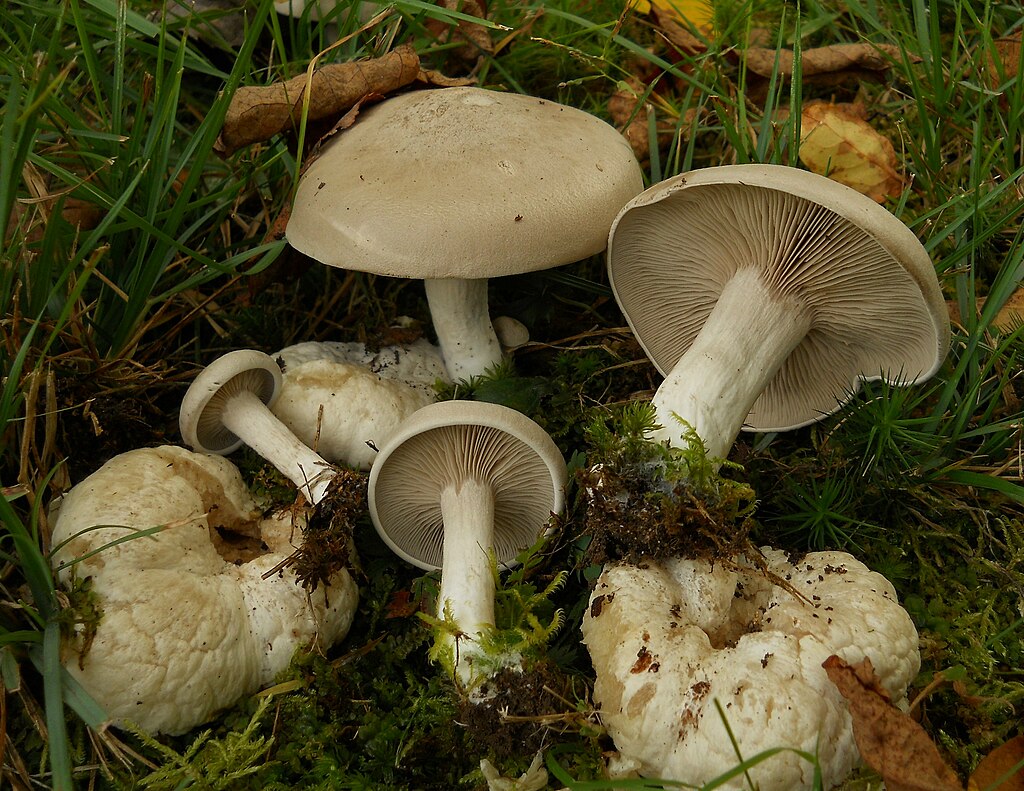
Entoloma abortivum also produces a non-abortive fruiting body, which includes a stem, cap, gills and spores. This mushroom is edible as well, but, unlike its aborted form, is nothing special in the kitchen. On top of that, its common mushroom shape and color makes it more difficult to identify; and, since there are poisonous members of the Entoloma genus, why risk it?
What is special is that, unlike the aborted entoloma, this (un)aborted entoloma is capable of reproduction. Each mushroom produces billions of tiny spores that hold the promise and potential for infecting more honey fungus. Personally, I hope to help my neighbor control the honey fungus that is taking over his yard.
Anyone with similar aspirations could most likely find the non-abortive entolomas growing alongside their abortive counterparts. Shrimp of the woods are commonly found right around NOW, in the middle of September, so keep your eyes peeled when walking through the woods. The mushroom form is pretty ordinary looking: grayish-tan with pinkish gills.
To spread the spores, you can take a mature mushroom and break it up around the honey mushrooms (also blooming NOW). The spores will be released naturally and washed into the soil with the next rain. If you need to transport them, you can take a spore print:
- Place the mushroom cap (gills down) on a sheet of white paper.
- Cover with a bowl for 24 hours and you should see a pink spore print on the paper.
- These spores can be transferred directly or stored.
- Fungal spores are dormant and can stay viable for many years, so you can store them like this in an envelope until you are ready to release them.
- To release the spores into the ground where honey mushrooms grow, gently wash them off the paper with running water.
If my mushroom dream comes true, many people will try this, and together we will slow the spread of a forest pathogen, while producing an abundance of a desirable culinary mushroom.
Cooking with shrimp of the woods
Foraging shrimp of the woods can be frustrating, since they are often very dirty, buggy, or past their prime. Avoid fungi that have visible bugs or feel spongy, they are likely to be full of insect larvae. Be sure to cut off the dirty base before putting any specimens in your basket — lest they soil the rest. Cut away any dirty crevices with a knife and rinse them off.
The interior should be firm, white, and even textured. If the flesh is turning brown or soft they are too old to be good. Any visible outline of a mushroom inside indicates that it is actually not shrimp of the woods.
Shrimp of the woods has a mild flavor that pairs well with strong spices, much like shrimp of the ocean. The key to cooking them is to reduce its moisture. Dry-sautéeing is an easy way to achieve full flavor with many mushrooms, including shrimp of the woods. Then they can be used like shrimp in just about any recipe.
A word of caution: Like many wild edibles, shrimp of the woods can cause gastric distress in some people. Always start with a small sample when tasting shrimp of the woods for the first time to test for sensitivity.



